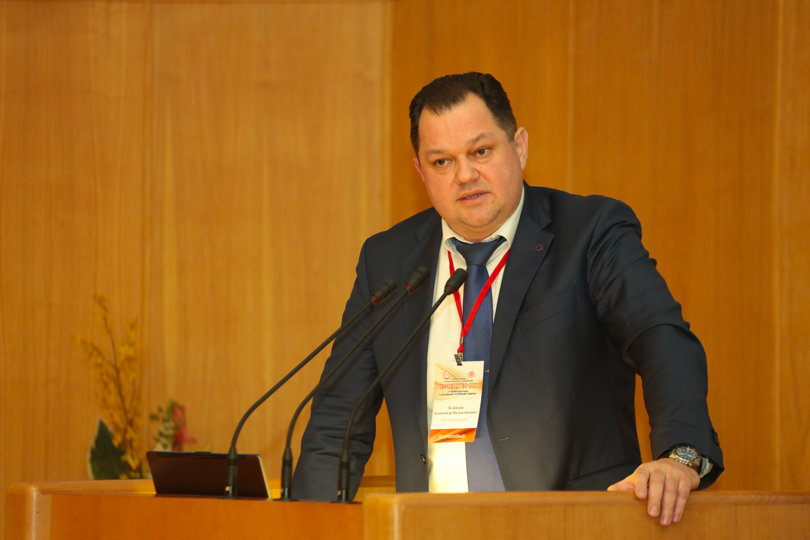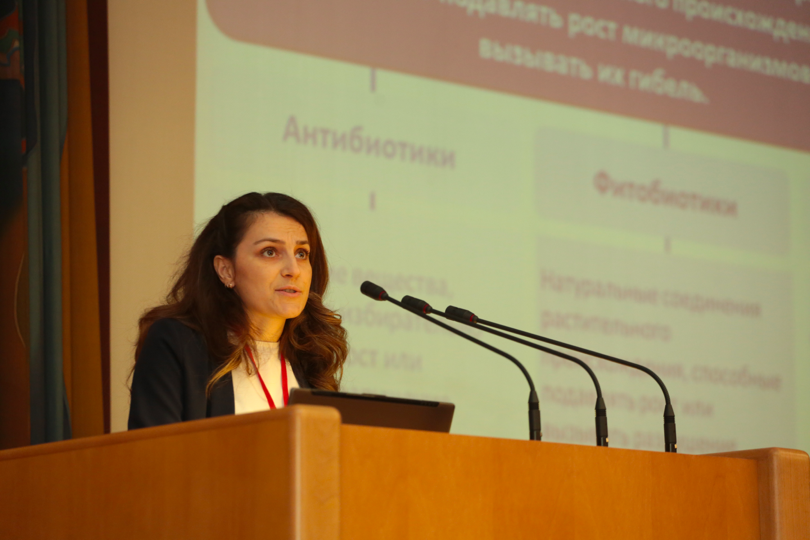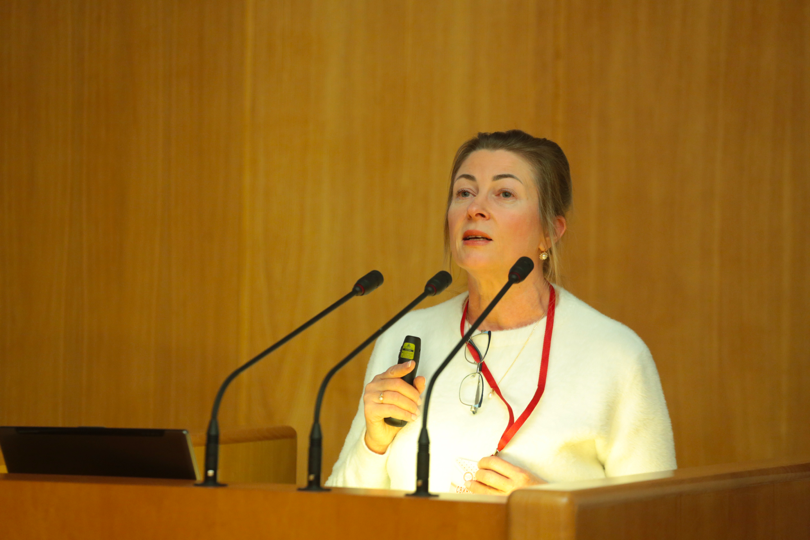VIC Group experts explain proper veterinary strategy in pig breeding and how to properly raise repair pigs

VIC experts spoke at the XV International Scientific and Practical Conference of the National Union of Pig Breeders "Pig Breeding-2023. From adapting to further sustainable development" which took place in Moscow on December 6 and 7.
On the first day of the business program at the Veterinary section, the speakers pointed out the problem of antibiotic resistance and modern solutions that will help to avoid the use of unjustified amounts of chemical drugs to combat animal diseases.
Alexander Klyandin, Director of the VIC Group's Pig Breeding Division, spoke about modern technological solutions required for risk management at the production site. The expert outlined global trends in pig breeding: preventive vaccination, biosafety, diagnostics, management, ecology and strategy for antibacterial treatment.
Alexander Klyandin emphasized the latter trend because of the current problem of antibiotic resistance. The speaker remarked that antibiotics in veterinary medicine are used 2.5 times more often than in healthcare. However, enomous resources and time - 10-20 years - are spent on developing new molecules and preparations based on them, while resistance to them is developed within 1-2 years. In addition, antibiotic resistance leads to an increase in the cost of production and a decrease in its efficiency.
Laboratory diagnostics, staff training, developing and following treatment technologies with properly selected drugs, as well as the accurately observed requirements of sanitary and hygienic standards provide a more effective antibiotic therapy system. Another way is to develop an alternative approach - phytobiotics, already successfully used in the treatment of gastrointestinal diseases in pig production, probiotics and prebiotics, which contribute to the intestinal microflora regulation and stimulate natural resistance.
The speaker concluded that an effective strategy for the antibacterial medication ensures improved production performance by minimizing risk factors at the farm.

Lubov Denisova, Leading Veterinary Consultant of VIC Group, also emphasized the need for rational antibiotic use in pig production and gave more details on alternative preparations for disease control - phytobiotics and acidifiers.
The expert presented the results of the GI disease control program for pigs based on the phytobiotic PROACTIV KER RS: 7.4% increase in average daily gain, 5.1% increase in average weight, 31% decrease in mortality and 6.5% increase in the company's revenue.
Also Lyubov Denisova noted that the properly balanced formula of organic acids has a bacteriostatic and bactericidal effect.
Application of PRODACTIV ACID SE acidifier as part of the program " Pathogens Control through Organic Acids" at a number of pig farms in Russia showed an increase in average daily gain by 6.3%, average weight by 4.1%, a decrease in mortality by 48.4% and an increase in revenue by 5%.
The speaker reported that alternative methods have already proven to be effective ways of controlling pig diseases.

The session devoted to high genetic potential and competencies was held on the second day of the business program of the conference, and featured Dr. Angelika Zabolotnaya, leading technologist-consultant of the VIC Group's pig breeding division.
The expert presented the latest research data showing that the culling of sows of the first farrowing at the production sites reaches almost 50%, which is a considerable figure and causes significant losses - from the birth to the first weaning of piglets the company spends more than 205 thousand rubles on one rearing gilt maintenance. A sow pays off only after the third farrowing.
To avoid mistakes that lead to culling, 10 key factors should be taken care of when growing a rearing gilt.
- Start selection from the very birth - from nests with a high selection index; take pigs with a live birth weight of more than 1.2 kg for rearing.
- Feed them with separate compound feed with own formulation containing optimal amounts of vitamins, calcium and phosphorus.
- Provide a larger stall area than for fattening stock - 1.5-1.9 sq.m. per animal.
- Select pigs that have reached 100 kg of live weight, based on teats, developed external genitalia (minimum 14 teats, 4 pairs - below the navel and well developed).
- Pay attention to the position and strength of the limbs, the absence of wounds and bulges around the hooves and joints.
- Transfer to the adapter to the area for single and gestating sows not later than 160-170 days, complete all vaccinations 2 weeks before the planned insemination.
- Place in small-group stalls of 10-12 head with rationed feeding.
- Provide a 16-hour light day and illumination of 200-300 lux at eye level to ensure normal synthesis of sex hormones and their release into the bloodstream for development of the reproductive organs.
- Stimulate the pig's hormonal system with boar "snout to snout" regularly, 2 times a day, for 7 minutes each.
- Carry out the first insemination at 140-150 kg of live weight, 230-240 days of age, at the second or third recorded hunt, and the fat depth of 16-19 mm at the level of the sixth-seventh thoracic vertebrae.
Angelika Zabolotnaya also presented the results of 13 production trials with the use of AXION SWINE, a feed additive designed to increase the milk production of sows. The average indicators of the trials were: +0.26 head to weaning, increase in the piglet weight at weaning by 244 g, and the total nest weight by 4.6%. At the same time, additional profit amounted to 627 rubles per nest, and return on investment - 5.3 rubles for each invested ruble.
"The best piglets are obtained from the main sows: they are born heavier, they have higher viability and give 4-5 kg more carcass in the end. To accurately observe the herd structure - 20% of rearing gilts and 80% of the main sows, the rearing gilts should be raised correctly, because it is the rearing gilts that define the development strategy of the farm for the next 3 years", summarized the speaker.
In conclusion, the expert presented a new training movie of VIC Group on modern pork production.
